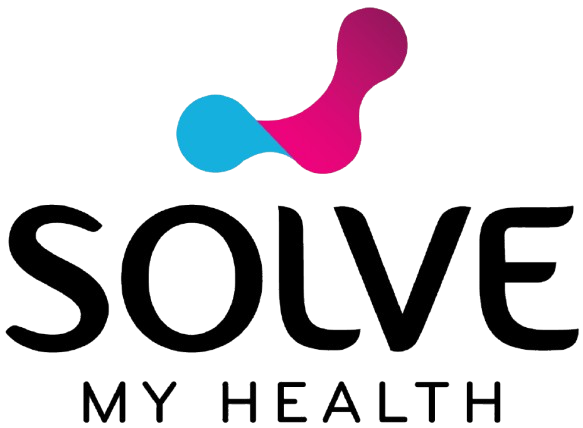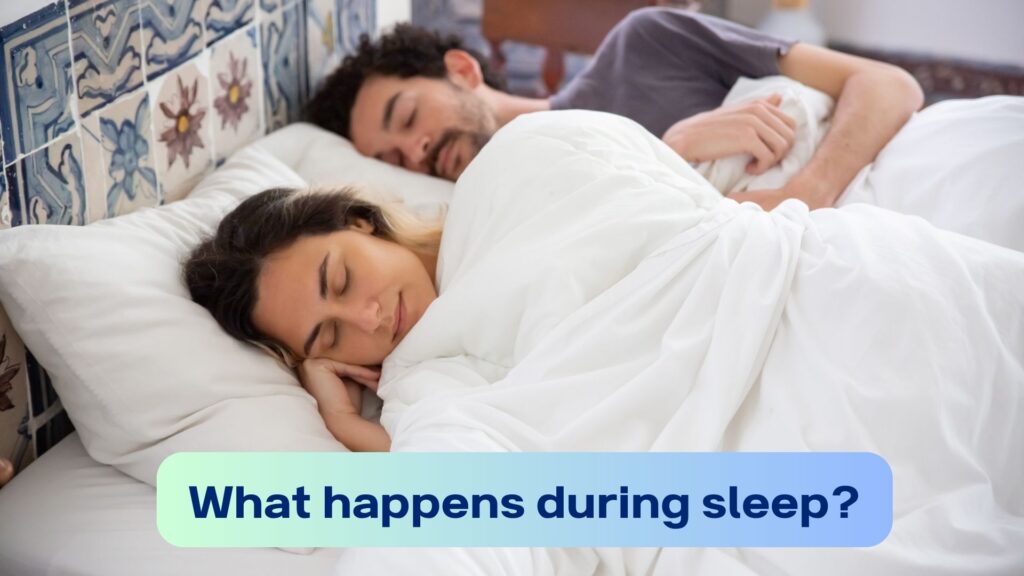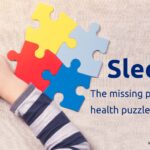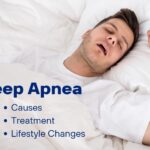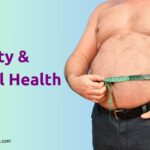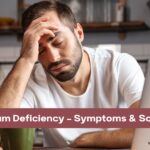According to various health associations, a normal adult needs 7-9 hours of sleep per night for optimal health. It is a well-established fact that sleep deprivation can have serious health consequences. Poor sleep also leads to chronic health conditions, including obesity, diabetes, cardiovascular disease, and mental health disorders such as depression and anxiety. Sleep-related issues also create significant economic costs and burden. According to a study by the RAND Corporation, insufficient sleep among workers costs the U.S. economy up to $411 billion annually. A person spends nearly 1/3rd of his lifetime sleeping and it is one of the important pillars of health. We also know that sleep is a fundamental physiological process indispensable for our overall health and well-being. But why is sleep this important? Did you know that there are various stages in our sleep? What are these sleep stages, and what exactly happens when we sleep?
What happens during sleep?
During sleep, our body goes through tissue repair, muscle growth, and many other functions such as memory consolidation and emotional regulation. During sleep, our brain processes information gathered throughout the day, and forms connections that aid learning and memory. Quite naturally, when we don’t get enough sleep, it disrupts these essential processes, leading to impaired concentration, and mood disturbances apart from increasing the risk of chronic diseases such as obesity and diabetes.
Sleep is a dynamic process that consists of multiple sleep cycles throughout the night. Each sleep cycle consists of four distinct stages –
- N1 (Non-REM Stage 1)
- N2 (Non-REM Stage 2)
- N3 (Non-REM Stage 3), and
- REM.
Each of these 4 distinct stages serves a unique purpose in the restorative process of our body. On average individuals go through four to six, such sleep cycles during a typical night. The duration of each cycle may vary, they generally last anywhere from 60 minutes to 120 minutes. The first sleep cycle is the shortest and ranges from 60 – 90 minutes. The subsequent sleep cycles can vary from 90 minutes to 120 minutes. It is also worthy to note that, the length of the above mentioned 4 stages within each sleep cycle may also vary as the sleep progresses.
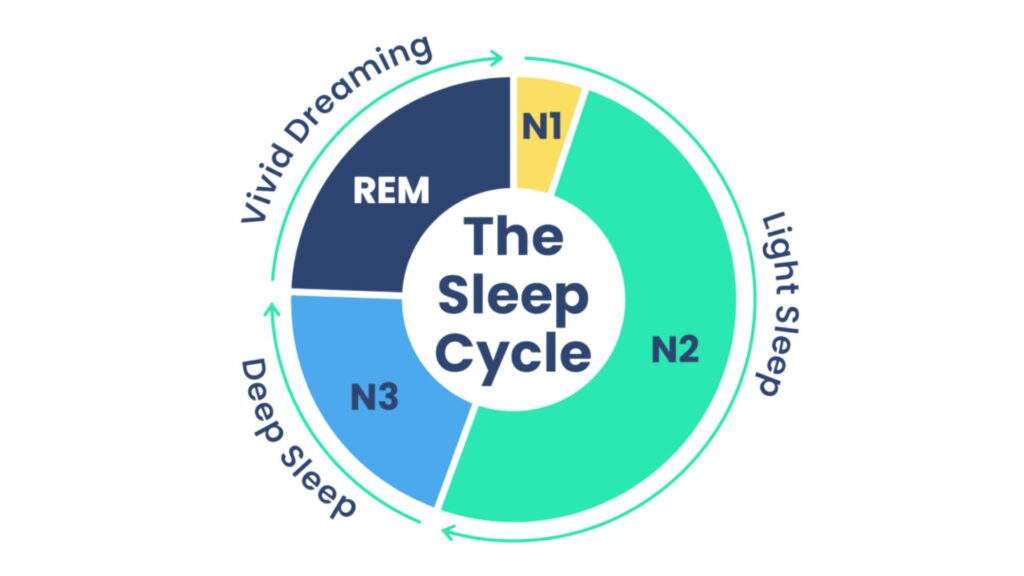
Non-REM Sleep:
Non-REM sleep consists of three stages: Stage 1 (lightest Sleep), Stage 2 (light sleep), and Stage 3 (deep sleep).
N1 (Stage 1 of Non-REM)
Stage 1 of Non-REM sleep, also known as N1 is the lightest mode of sleep. Our body begins to transition from wakefulness to sleep, marked by slowed brain waves and muscle relaxation. This stage is relatively brief (1 – 7 mins) and serves as a transition into deeper sleep. Our body is not fully relaxed and there may be intermittent movements as the body and brain activity gradually slow down. It’s relatively easy to awaken someone from Stage 1 sleep, but if left undisturbed, they will progress quickly into Stage 2 sleep. Throughout the night, individuals who sleep without interruption may not spend a significant amount of time in Stage 1 as they progress through subsequent sleep cycles
N2 (Stage 2 of Non-REM)
Stage 2 of the Non-REM sleep, also known as N2 is the light sleep mode. It is characterized by a further slowdown in brain activity, with occasional bursts of rapid brain waves known as sleep spindles. We become less responsive to external stimuli, preparing for deeper sleep. During this stage, our body temperature starts dropping and the muscles relax. The breathing rate and heart rate, both slow down.
Stage 2 sleep typically lasts 10 to 25 minutes in the initial sleep cycles. In subsequent sleep cycles, N2 becomes longer as the night progresses. On average, individuals spend about half of their total sleep time in Stage 2 sleep.
N3 (Stage 3 of Non-REM)
Stage 3 sleep, also known as N3 or deep sleep, is characterized by a deeper level of relaxation, making it more difficult to awaken someone during this phase. In N3 sleep, muscle tone, pulse, and breathing rate decrease further as the body relaxes. The brain activity during this stage exhibits a distinct pattern characterized by delta waves. This stage is hence also known as “delta sleep” or “slow-wave sleep” (SWS).
Deep sleep is essential for restorative sleep, facilitating recovery and growth while also enhancing the immune system and other vital bodily processes. Despite reduced brain activity, research suggests that deep sleep (N3) plays a pivotal role in insightful thinking, creativity, and memory consolidation.
Typically, most of the deep sleep (N3) occurs during the first half of the night. In the initial sleep cycles, N3 lasts for 20 to 40 minutes. However, as the night progresses, these stages become shorter, and more time is spent in REM sleep instead.
REM Sleep:
During REM (Rapid Eye Movement) sleep, our brain activity increases significantly – almost to the level seen during wakefulness. The eyes start moving rapidly behind the closed eyelids – hence the name ‘REM’. It is in this stage, that we see dreams most frequently and vividly. Our body experiences muscle atonia, a temporary paralysis of most muscles. All muscles except for those controlling eye movement and breathing undergo atonia, preventing us from acting out our dreams. Although dreams can occur during any sleep stage, they are less frequent and intense during other stages (Non-REM periods)
Under typical circumstances, we do not enter into REM sleep until approximately 90 minutes into our sleep cycle. The initial REM stages may last for only a few minutes. However, as the night progresses, REM stages become longer, particularly in the latter half of the night. As the night and sleep progresses, the REM stage can last up to an hour as we enter the 3rd and 4th sleep cycle. On average, REM stages constitute around 25% of adult sleep.
| Sleep Stage | Type | Also Known as | Length of the stage |
| Stage 1 | Non-REM | N1 | 1 – 7 minutes |
| Stage 2 | Non-REM | N2 | 10 – 25 minutes |
| Stage 3 | Non-REM | N3, N3, slow-wave sleep (SWS), delta sleep, deep sleep | 20 – 40 minutes |
| Stage 4 | REM | REM | 10 – 60 minutes |
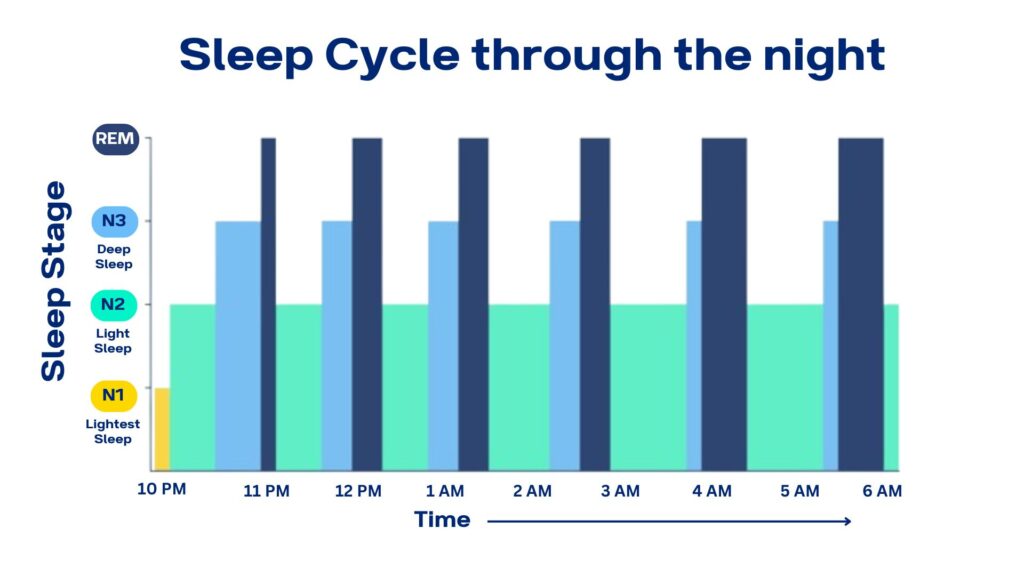
How do we measure various stages of sleep?
To measure and analyze the different stages of sleep, sleep specialists rely on a technique called polysomnography (PSG). During the sleep study, the technician will place electrodes and sensors on specific areas of our body to monitor various physiological parameters during sleep. Electroencephalography or EEG is used to measure the Brain wave activity during N1, N2, N3 and REM Stages. Eye movements are measured using electrooculography or EOG, while muscle tone is measured with electromyography or EMG. Apart from this, respiratory patterns, heart rate, and oxygen levels are also measured and recorded.
One of the key outputs of a PSG sleep study is the creation of a hypnogram. This is a graphical representation of the individual’s sleep stages and transitions throughout the night. It provides a visual timeline, displaying time intervals along the horizontal axis and sleep stages along the vertical axis. This visual representation helps to identify the duration of different sleep stages, the continuity of sleep cycles, and any abnormalities or disruptions in sleep patterns.
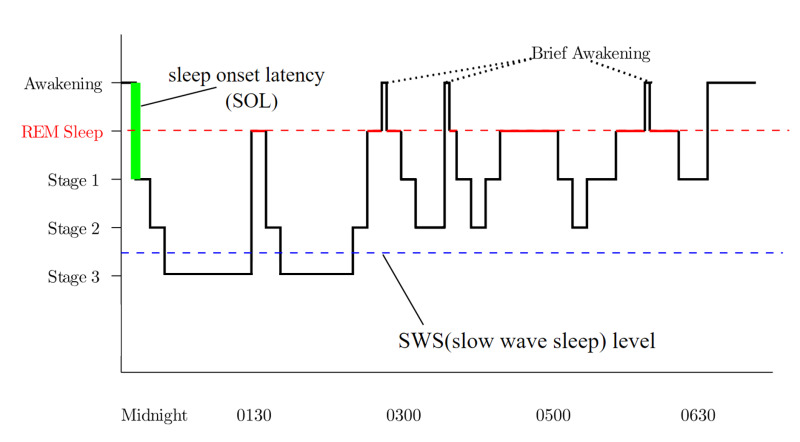
Can you sleep in the day to compensate for less sleep at night?
While daytime naps can help mitigate some of the effects of sleep deprivation, they may not fully replicate the restorative benefits of nighttime sleep, particularly in terms of deep sleep and REM sleep. This is because, during night sleep, an individual goes through 4 to 6 sleep cycles, with each cycle being different in terms of the length of its constituent stages. As discussed already, N3 stages are longer in the initial cycles, while REM stages are longer in the later cycles.
A broken sleep, say 4 hours at night and the remaining 4 hours during the day will not compensate for the sleep cycles and their individual stages in terms of their length, brain activity and various other body functions – both cognitive and physiological. Sufficient amounts of both deep-sleep and REM sleep across various sleep cycles, are essential for cognitive functions, emotional well-being, and physical health. Inadequate sleep, particularly in deep sleep and REM sleep stages, can impair thinking abilities, emotions, and overall physical health.
Those who have disrupted sleep, especially during earlier sleep stages, such as those with sleep apnea, may find it challenging to progress into deeper sleep stages. Similarly, individuals with insomnia may struggle to accumulate enough total sleep time to ensure adequate time spent in each sleep stage. These disruptions can lead to a variety of issues, including impaired cognitive function, emotional instability, and compromised physical health. Therefore, achieving a healthy balance of sleep stages is essential for overall well-being. Such a restorative sleep is best achieved in a single stretch of 8 hours of sleep at night as against splitting the sleep across day and night.
What Affects Sleep Stages?
Age plays a significant role in shaping sleep patterns throughout life. Newborns spend a substantial amount of time in REM sleep. They enter the REM stages immediately upon falling asleep. As they grow older, the sleep architecture gradually resembles that of adults. Older adults experience less REM sleep compared to younger individuals.
Recent sleep patterns also can greatly impact the regularity and composition of sleep stages. Irregular or insufficient sleep over several days can disrupt the normal sleep cycle. This may lead to alterations in the duration and sequence of sleep stages. Substances such as alcohol and certain drugs also can alter sleep architecture. For example, alcohol may suppress REM sleep during the early part of the night, but as its effects wear off, there can be a rebound in REM sleep, resulting in prolonged REM stages. Additionally, sleep disorders can affect sleep stages greatly. Conditions like sleep apnea and restless legs syndrome (RLS) can cause multiple awakenings during the night. This will interrupt the natural progression of sleep stages and lead to irregularities in the sleep cycle.
These factors, among others, contribute to the variability in individual sleep patterns and underscore the importance of considering personalized approaches to managing sleep health.
Physiological Changes during sleep
While we sleep, numerous physiological changes happen in our body. As we enter a sleep state, thousands of neurons in our brain transition from the waking to the sleeping state, sending crucial signals throughout your body. Although the exact biological purpose of sleep remains partly elusive, scientific research highlights its pivotal role in reinforcing the cardiovascular and immune systems while also regulating metabolism. These changes manifest in various core bodily processes:
- Breathing: During non-REM sleep, breathing slows down, reaching its lowest rate in the deep sleep stage. Conversely, breathing may become irregular during REM sleep.
- Heart Rate: Similarly, heart rate decelerates during the initial stages of sleep, particularly in Stage 3, before quickening during REM sleep, nearly matching wakeful levels.
- Muscle Tone: Muscles progressively relax during non-REM sleep, leading to a decrease in total energy expenditure. In REM sleep, most muscles experience temporary paralysis, known as atonia, preventing physical responses to dream content while maintaining activity in respiratory and eye muscles.
- Brain Activity: Brain wave patterns exhibit distinct characteristics across sleep stages. In non-REM sleep, brain waves slow down substantially, punctuated by bursts of activity in Stages 2 and 3. Conversely, REM sleep sees a surge in brain activity, particularly associated with vivid dreaming.
- Dreaming: Dreaming can occur in any sleep stage. However, dreams during REM sleep tend to be more immersive and fantastical compared to those during non-REM sleep.
- Hormone Regulation: Sleep and the body’s internal clock, known as the circadian rhythm, play crucial roles in regulating hormone production. Hormones such as melatonin, growth hormone, cortisol, leptin, and ghrelin fluctuate throughout sleep stages, influencing processes like sleep promotion, metabolism, stress response, and appetite control.
Common Sleep Disorders: Understanding Disruptions to Sleep Patterns
Insomnia: Insomnia is characterized by difficulty falling asleep or staying asleep, leading to inadequate sleep duration and poor sleep quality. It can be acute (short-term) or chronic (long-term) insomnia. Read more on Insomnia – Click here
Sleep Apnea: Sleep apnea is a sleep disorder characterized by pauses in breathing during sleep. This usually occurs due to obstruction of the airway. This can lead to fragmented sleep, loud snoring, and daytime sleepiness. There are 2 main types:- obstructive sleep apnea (OSA), where the airway becomes blocked, and central sleep apnea (CSA), where the brain fails to signal the muscles to breathe. Read more on Sleep Apnea – Click here
Restless Leg Syndrome (RLS):- RLS is a neurological disorder characterized by uncomfortable sensations in the legs. This usually occurs during rest and is relieved by movement. These sensations can disrupt sleep, leading to difficulty falling asleep and staying asleep. Iron deficiency and other underlying conditions are very common in individuals with RLS. Read more on RLS – Click here
Narcolepsy: Narcolepsy is a neurological disorder characterized by excessive daytime sleepiness and sudden, uncontrollable episodes of falling asleep during the day. It can also involve symptoms such as cataplexy (sudden loss of muscle tone), sleep paralysis, and hallucinations during sleep onset or upon awakening. Read more on Narcolepsy – Click here
Sleepwalking and REM Sleep Behavior Disorder (RBD): Sleepwalking involves performing complex behaviours while asleep, such as walking or talking. This typically occurs during non-REM sleep stage. REM Sleep Behavior Disorder (RBD) on the other hand, is where individuals act out vivid dreams during REM sleep. This can lead to disruptive and sometimes dangerous behaviors. Read more on Sleepwalking – Click here
Circadian Rhythm Disorders: Circadian rhythm disorders involve disruptions to the body’s internal clock, leading to disturbances in sleep-wake patterns. Examples include delayed sleep phase disorder (difficulty falling asleep and waking up at socially acceptable times) and shift work sleep disorder (difficulty sleeping due to working non-traditional hours). Read more on Circadian Rhythm Disorders – Click here
About SOLVEMyHealth
SolveMyHealth, a comprehensive healthcare platform, dedicates itself to addressing a wide range of health concerns, with a strong focus on sleep disorders and sexual health. Various factors such as psychological, respiratory, neurological, and nutritional issues can disrupt sleep. At SolveMyHealth, we adopt an integrated approach to sleep disorders, leveraging expertise across disciplines. Our services include home-based sleep studies followed by consultations with specialists such as pulmonologists, neurologists, or psychiatrists as needed. Our lifestyle team, consisting of nutrition experts, exercise specialists, and psychologists/counsellors, collaborates to provide our clients with a diet and exercise plan and also help improving sleep hygiene.
In addition to sleep disorders, SOLVEMyHealth also provides discreet and professional care for sexual health concerns in both males and females. Conditions such as erectile dysfunction, premature ejaculation, PCOS, painful intercourse, infertility, and more are managed with sensitivity and confidentiality. Our holistic approach extends to discreet medicine delivery, ensuring patient privacy and convenience throughout their healthcare journey. SOLVEMyHealth aims to empower individuals to achieve optimal health and well-being across various aspects of their lives, promoting holistic and integrated healthcare solutions.
